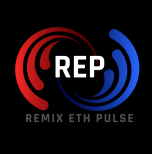The New Copyright Challenge in the AI Era: Does AI Creativity Infringe Copyright?
In the field of digital creativity, artificial intelligence (AI) and its application in generative AI have opened up a new era, challenging the boundaries of traditional copyright law.
Contrary to popular belief, the machine learning process of AI is not similar to the typical reproduction or imitation by infringers. Instead, AI machine learning is more akin to the learning process of humans, where it learns the logic and presentation order of colors, language, and pattern arrangement by interacting with works. It then uses its learning outcomes to create new works that are substantially different from the learning materials.
This article aims to delve into the complexity of AI machine learning and clarify its legal implications by citing recent important cases to correct common misconceptions.
How does AI generate images and text?
In generative AI, the basic principle is to create new content through learning from data. Unlike the typical patterns of copyright infringement such as reproduction, distribution, and adaptation, generative AI learns from existing works and data.
Image Generation
1. Data Analysis and Pattern Learning:
For AI used in image creation, it starts by analyzing a large amount of image data. This includes identifying objects in images and understanding deeper elements such as brush texture, color gradients, lighting, and spatial relationships. For example, a mature AI in landscape painting would recognize different elements such as brushstrokes, color blending techniques, and the interaction of light and shadow, and apply them in its generated works.
2. Feature Extraction:
Convolutional neural networks (CNN) in AI algorithms can extract specific features from image works, identifying and separating various features such as edges, shapes, and textures. “Feature extraction” is crucial for AI robots to understand different artistic styles, brushstrokes, and painting techniques.
3. Generation of New Works:
Once AI learns specific techniques and artistic styles through feature extraction and data analysis, it can generate new images. This is usually done using Generative Adversarial Networks (GANs). GANs consist of image generators and image discriminators, and through their interaction and iterative process, generative AI produces images that are stylistically and feature-wise similar to the training data (often copyrighted works), but not substantially similar upon closer examination.
Text Generation
1. Data Acquisition and Language Model Building:
For text generation, AI models like ChatGPT absorb a large amount of text data from various sources, including books, articles, website content, and even conversation records. AI constructs a language model that can understand grammar and infer context from the text data.
2. Language Prediction:
The most common language prediction model in text generation AI is n-gram, which calculates the probability of certain words or phrases being followed by other words, achieving idiomatic expressions, narrative structures, and subject-verb agreement. However, n-gram models are limited in handling more complex text generation tasks.
3. Encoding and Text Understanding:
For complex tasks such as extending context and generating complete texts, n-gram models are insufficient as they can only predict based on limited contextual information, without understanding the semantic meaning of the text. In contrast, Transformer models apply self-attention mechanisms to transform text into vectors (input embedding) and add positional encoding to incorporate the order of words, achieving a comprehensive understanding of the entire text context.
4. Text Generation:
After deep understanding of the text through the encoder, the decoder generates text based on the learned text features. Even long-distance dependencies between words can be effectively captured. The characteristics of the Transformer model enable it to generate coherent and creative text that is not only based on a deep understanding of the original text’s semantic meaning but also possesses logical coherence and originality in content.
How does AI generation differ from copyright infringement?
From the principles of image and text generation mentioned above, it is evident that AI generation differs significantly from the infringement patterns defined in copyright law. The following points highlight this difference:
1. Creative Nature of AI:
Generative AI does not simply “copy” or “reproduce” the data it learns (existing works). Instead, it learns the underlying logic, structural elements, and styles of texts and images from extensive data and uses them to create original works with novelty. For example, in image generation, although AI may learn from existing artworks, the resulting image is not a reproduction or replica of any specific existing work but a new creation that reinterprets and combines the learned elements.
2. Legal Interpretation:
From a legal perspective, there is a significant distinction between AI-generated content and human reproduction. The fundamental concept of copyright law is to “protect the expression of ideas, not ideas, concepts, or systems themselves.”
As mentioned above, AI-generated works learn the underlying logic, structural elements, artistic styles, and brushstrokes from the training data (original works), but they do not “reproduce” or “replicate” the expression of the training data. The way AI generates works challenges the boundaries of traditional copyright infringement. In the representative case of “Andersen v. Stability AI Ltd,” the legal focus of the litigation was whether the images generated by Stable Diffusion constituted infringement when it used copyrighted images for AI training.
3. Transformation and Fair Use:
When discussing whether AI-generated works constitute infringement, the issue of transformative use arises. This means that generative AI adds additional expressions or even new meanings to the original works. At this point, it is necessary to consider whether there is a possibility of “fair use.”
This depends on the AI’s ability to create significantly different works from the original works. Currently, DALL-E has banned the provision of AI-generated works based on the original works to avoid such legal disputes.
Controversies surrounding the use of AI to modify existing works have reached their peak with the recent popular game “Palworld,” which uses generative AI to modify and even fuse multiple Pokémon. In the case of Thomson Reuters v. Ross Intelligence, there was an in-depth discussion between the parties regarding whether AI-generated legal documents constituted fair use, and a positive conclusion was reached.
The Impact of Generative AI on Copyright Law
The process of AI-generated content showcases a creative form that is different from direct reproduction or replication. This distinction is crucial for understanding why AI’s learning and generation methods differ from patterns of copyright infringement.
As AI continues to develop, existing legal frameworks and interpretations must be revised and developed accordingly. With the continuous advancement and update of AI technology, the patterns of creation addressed by copyright law are constantly changing.
The difference between “AI learning and generation models” and “copyright infringement patterns” and the interpretation of legislative logic and creative ethics are not just matters of definition but also involve far-reaching implications.
As AI technology progresses, the existing legal framework will undoubtedly undergo revisions. However, the direction of the corresponding legal amendments depends on how legislators balance the “innovation potential of AI” and the “protection of original works.”
Therefore, the next time you encounter a debate about whether generative AI constitutes copyright infringement, remember that it is a clash of values and avoid making hasty conclusions based on outdated perspectives.
Viewpoint articles present diverse opinions and do not represent the stance of “WEB3+”.

